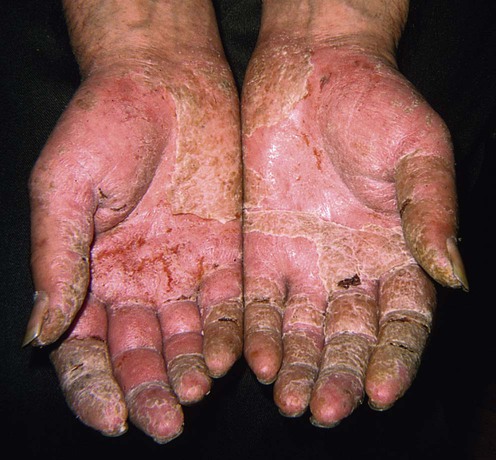Irritant contact dermatitis

(Courtesy of Kalman Watsky, MD. From Bolognia, J.L., Jorizzo, J.L., Schaffer, J.V. (Eds.), Dermatology, third ed. pp. 249–259. © Elsevier.)

(Courtesy of Kalman Watsky, MD. From Bolognia, J.L., Jorizzo, J.L., Schaffer, J.V. (Eds.), Dermatology, third ed. pp. 249–259. © Elsevier.)
